Both rural and urban GAA clubs face increasing challenges as demographics in Ireland change. This is one of a series of articles exploring the issues clubs face and what they are doing to adapt.
The club, as we are frequently reminded, is the core unit of the GAA. It requires effort and resources. Activities are time consuming and between affiliation fees and maintenance, significant expenditure is necessary. So what happens when the basic model gets into difficulties?
When the surrounding community begins to dwindle and school enrolment falls away, the life blood of the community begins to dry up – or because of overwhelming catchments and prohibitive land prices, it becomes increasingly hard to find facilities and amenities within any sort of reasonable distance of the people they are supposed to serve.
Urbanisation and rural decline are phrases that have entered the GAA conversation to become as prevalent as chatter on championship structures or black cards. Because Ireland’s population shift impacts every club on the island, it is profound and potentially detrimental.
READ MORE
The challenges facing the GAA in big cities and towns are completely at odds with the challenges the association encounters in rural areas. Stripped right back, the basic problems are: urban clubs have a growing playing membership but not enough playing space, while rural clubs have a dwindling playing membership but plenty of playing pitches.
Admittedly that is taking broad strokes to a far more nuanced issue, but the nub of the problem remains the migration of people away from rural heartlands to live and work in urban areas. Although in Ireland that migration is largely towards the east of the country, it is also taking place within counties towards centres of population. As noted by the Strategic Review Committee, the 2002 body appointed to replicate the granular review of the McNamee Commission three decades previously: “The greatest implications and challenges for the GAA of the future are to be found in growing cities, larger settlements across the country, satellite towns serving major cities and the increasing number of towns with populations of more than 5,000 people. The net result is that the effects of urbanisation are being felt across the entire country, including by village and rural clubs.”
It is a societal shift, and clubs are being forced to adapt or die.
Neither is this a sudden problem. Indeed the GAA have watched this oncoming train barrelling down the tracks for many years now.
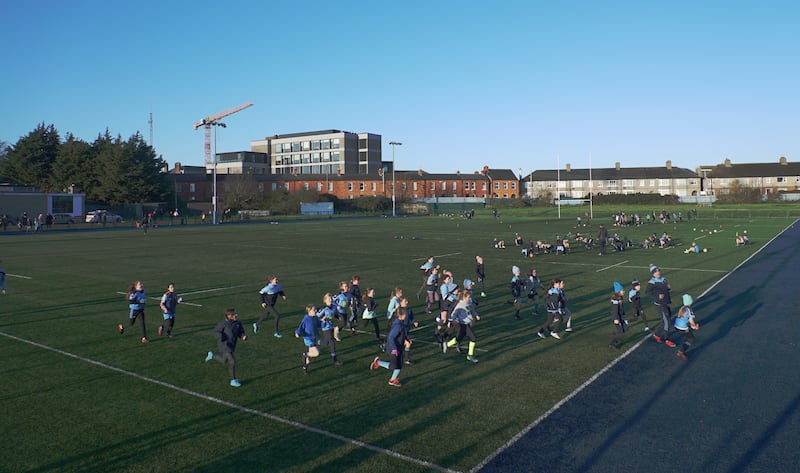
Just more than 50 years ago, the McNamee Commission, the first in-depth study undertaken by the association, stated an essential and existential difficulty.
“The GAA is concerned with all the people of Ireland, urban and rural. The problem is that the association is weakest where the population is increasing; it is strongest where the population is declining. That problem has always been there but the extent of the adverse trends in recent years has now brought a full realisation of its seriousness for the association.”
[ All challenges are different for GAA clubs - in Na Fianna, we crave spaceOpens in new window ]
At the time, the growth of urbanisation was tracked from 20 per cent (of the State’s population) nearly 100 years ago in 1926 to 33 per cent, 40 years later in 1966 and by the time the commission made its report, the figure rose to 50 per cent.
The GAA’s recent report by the Community Development, Urban and Rural Committee (CDURC) took as its basis an urban population of 63 per cent and a rural population of 37 per cent – in other words, the population distribution has flipped in little more than 50 years.
As we build higher and higher, and in increasing density, are we doing so in a sustainable manner?
— John Costello, Dublin GAA CEO
In recent years the involvement of women has revolutionised both Gaelic games and their administration. Last year’s congress voted overwhelmingly to advance the process of integration but it comes with challenges.
Just as integration has supplemented both playing and administrative numbers in rural areas, the boom in women’s games, football especially, places demands on facilities and additional pressure on a poor public recreation infrastructure.
Páraic Duffy, the former director general of the association, raised the matter numerous times in his annual reports, writing in 2017: “We are struggling to cope with both the growth of population in urban areas and the decline in rural Ireland. We cannot be idle bystanders and neither can we take on the primary role of government to support the development of rural areas.
“What we must do is to lend our voice to those of other organisations that are advocating the implementation of a clear national policy on rural Ireland. It is now time for urgent and effective action.”
This crystallises the issue. The GAA is beset by a problem over which it has limited effective control.
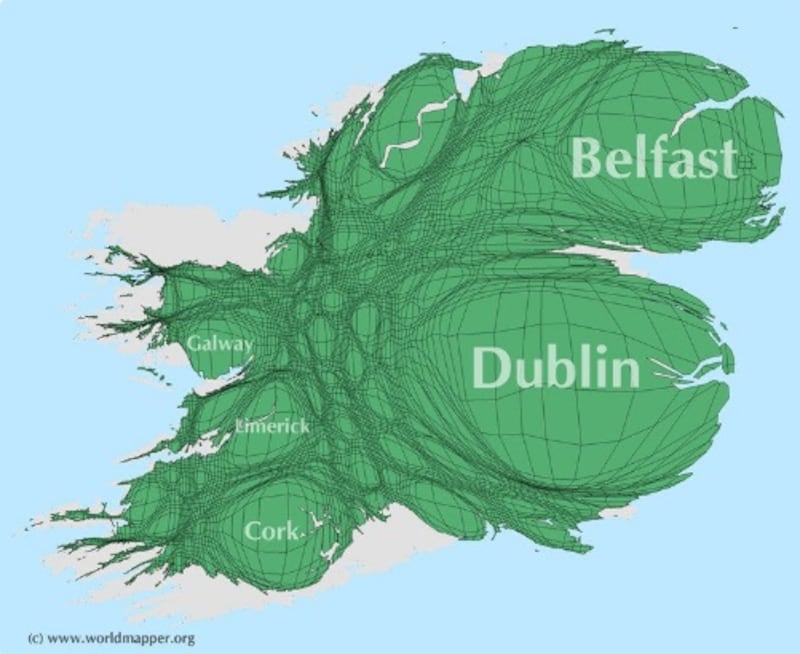
More recently the CEO of Dublin GAA, John Costello, in December warned that the availability of land in the capital for playing pitches would be one of the main challenges they will be faced with in the future. Many clubs in Dublin are crying out for pitches but, starkly, he warned the situation is unlikely to improve.
“As we build higher and higher, and in increasing density, are we doing so in a sustainable manner? Are we catering for the needs of the people who will live in these new dwellings. Are we providing enough amenity space? Enough social facilities? Enough green spaces for their children to participate in organised competitive field sports?”
Former GAA president John Horan, who convened the CDURC, made the point pithily that while green frequently goes grey in cities, grey never returns to green.
Dublin, of course, is almost a separate case study to the rest of the country in terms of the challenges it faces. Between the canals the city is a GAA wasteland while a little further out most city clubs are continuously seeking more green spaces.
Scoil Uí Chonaill has its own premises in Clontarf but is also the club spearheading games development in the inner city.
“We have worked closely with NEIC (North East Inner City Initiative) and schools in the area,” says the club’s Finbarr Maher. “We offer two options on a Saturday morning: training in our club in Clontarf or the AstroTurf in the [O’Connell] school, which is more of an introduction.”
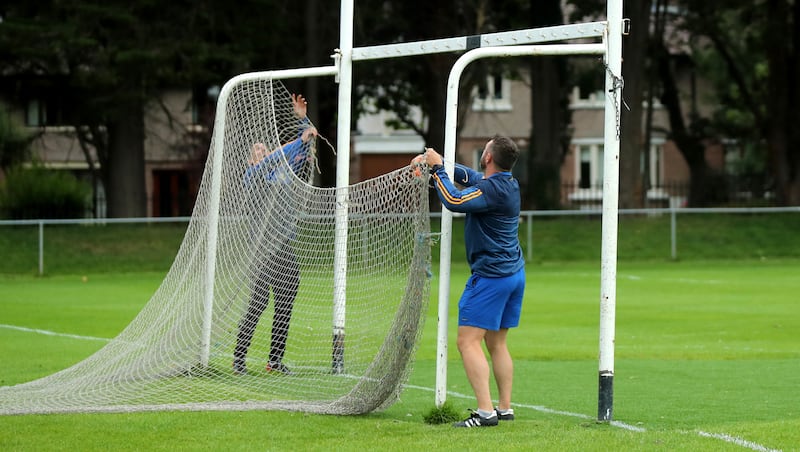
He makes the point that although the club isn’t very far from town, children in the inner city don’t always have access to transport and having the immediacy of a local facility makes a big difference.
Coping with social inequality is another challenge for Dublin where the GAA has become increasingly middle class, dependent on professional expertise to administer huge clubs and manage the purchase of extravagantly priced real estate.
The 2017-2022 Dublin City Parks Strategy report on the provision of playing pitches in the Dublin City Council (DCC) highlights the situation. There are 231 public playing pitches in the area covered by DCC, 169 of which are allocated as soccer pitches, 60 for Gaelic games and two for rugby.
The contention in the report over the disparity comes down to size and playing numbers: a GAA pitch is nearly twice the size of a soccer equivalent and the latter can comfortably play “small sided games”.
“The breakdown of the 231 playing pitches would indicate that there is greater access to soccer pitches on public lands and soccer has the highest participation rate in the city.”
Many in the Gaelic games community wonder to what extent is the status quo self-perpetuating.
It’s easy for people to say, ‘ah, why don’t you go and amalgamate?’ but that amalgamation won’t cater for the same number of people as the existing clubs do
— Ciarán Ó hEadhra, Kiltane
The report notes that GAA clubs are more likely to own their premises, which is true in the suburbs but the CDURC points out privately owned facilities make up just 32 per cent of the pitches used in the city.
The association in Dublin is heavily dependent on public and school pitches.
It’s not just a Dublin problem. Figures from Derry City and Strabane District Council in 2018 showed that despite comparable participation levels (45 per cent soccer and 37 per cent Gaelic games) council pitch allocation was 42-3 (grass) and 5-1 (artificial).
And yet Dublin is a land of the haves and have nots. Earlier this month the Ballyboden St Enda’s GAA club advertised for the position of an athletic development coach, whose main responsibilities will include overseeing and implementing all aspects of strength and conditioning, fitness and sports science, with their four senior and four minor teams – football, hurling, women’s football and camogie.
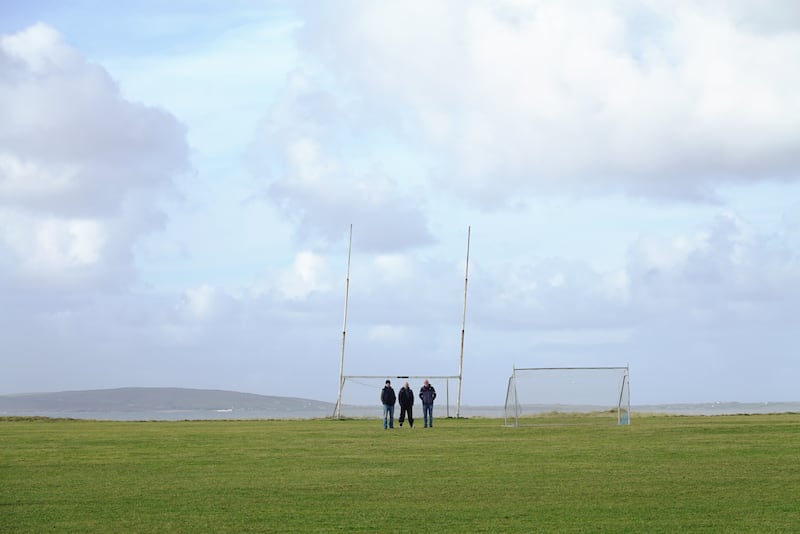
All the while so many rural clubs are just trying to keep their gates open and field a team. At AGMs across the country in recent months, discussions were held about amalgamations. It is a word treated with disdain by many who want their club to keep its own identity, but the reality is if they are to keep afloat asking a neighbour for a life vest is probably their best chance of survival.
Ciarán Ó hEadhra in Kiltane, a north Mayo club feeling the brunt of population shift argues that although amalgamation can be a necessity – his own club combined with nearby Ballycroy to ensure the fielding of under-age teams – “it rarely carries all of the communities with it”.
“It’s easy for people to say, ‘ah, why don’t you go and amalgamate?’ but that amalgamation won’t cater for the same number of people as the existing clubs do.”
The preliminary results of the 2022 census taken on April 3rd last year showed Ireland on that night had a population of 5,123,536. That is an increase of 7.6 per cent on the 2016 figure and is the highest population recorded in a census here since 1841.
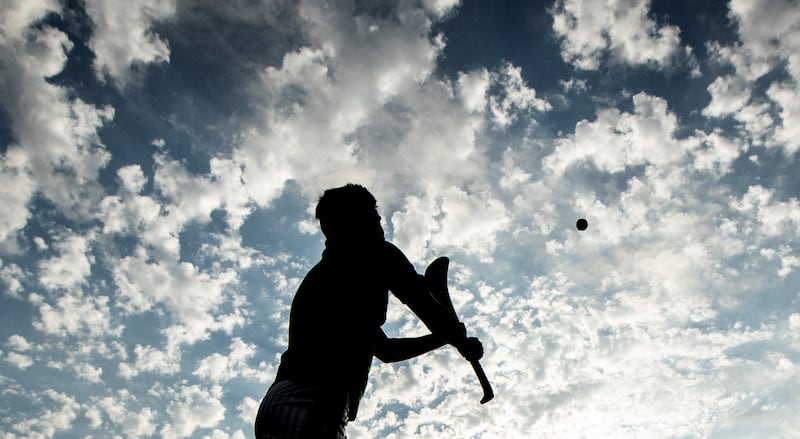
All counties had a population growth but most significantly those in Leinster, Longford, Meath, Kildare and Fingal showed the biggest increases. Ten out of the 12 Leinster counties had a higher percentage increase than the national average. The people are moving east.
Even the drift to towns and population centres within counties is noticeable. This is influenced by the location of economic activity but also by other issues, such as planning policy, which militates against locals building homes in their own area.
There isn’t always consensus on whether lobbying on matters such as this is an appropriate activity for the GAA.
Then there are trends, which although unhelpful, can’t be reversed by a community-based sports organisation on its own, such as the declining size of families and the centripetal pull of employment-rich industry.
Over the coming days we hope to bring a greater understanding of the challenges facing clubs in both rural and urban Ireland as well as the potential solutions – or at least mitigation – in the face of a rapidly evolving society.


















